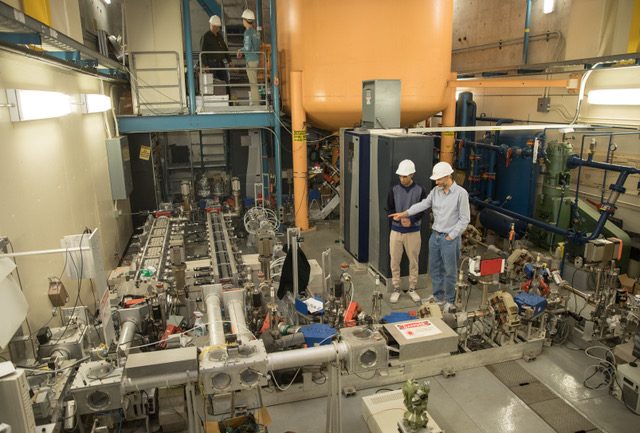
A confluence of breakthrough technologies will provide unprecedented opportunities in pulsed magnetic resonance over the next few years. In late 2017, the National High Magnetic Field Laboratory (NHMFL) in Tallahassee demonstrated the world’s first 32 T superconducting magnet. Meanwhile, UCSB is home to the Free Electron Laser (FEL) Laboratory and Institute of Terahertz Science and Technology (ITST); its FEL has the capacity to produce powerful and programmable pulses of radiation in the terahertz frequency band.
We propose to partner with the NHMFL and industry to develop a new facility at UCSB’s FEL: the Magnetic Resonance eXploration facility (MRX). The MRX will be a facility for high-power pulsed magnetic resonance at magnetic fields up to 32 T and frequencies up to 4.5 THz. UCSB’s FEL already houses the world’s first and only FEL-powered pulsed electron paramagnetic resonance (EPR) spectrometer. We envision adding nuclear magnetic resonance (NMR) to its pulsed EPR capabilities, enabling pulsed dynamic nuclear polarization (DNP) and nuclear hyperfine spectroscopies with proton NMR frequencies above 1 GHz.
In a 2013 report to the National Academies of Sciences, Engineering and Medicine, the National Research Council recommended that if a high-field superconducting magnet could be produced, such a magnet should be deployed at a centralized FEL facility with access to the terahertz radiation band. UCSB’s FEL is currently the only terahertz-frequency FEL user facility in the United States. Bringing a high-field superconducting magnet to UCSB to create the Magnetic Resonance eXploration facility provides a unique opportunity to fulfill a national need, and enable many experiments that cannot be done at the NHMFL.
The purpose of this workshop, BigMag@UCSB, is to bring together scientists from across the world whose research would benefit from the Magnetic Resonance eXploration facility. Potential uses for the MRX are far-ranging, from studying conformational changes in proteins, to creating and probing new phases of quantum matter. This workshop is an opportunity to brainstorm new use cases for the instrument, interface with partners from industry and the NHMFL, forge new collaborations, and shape the future of the proposed MRX facility.